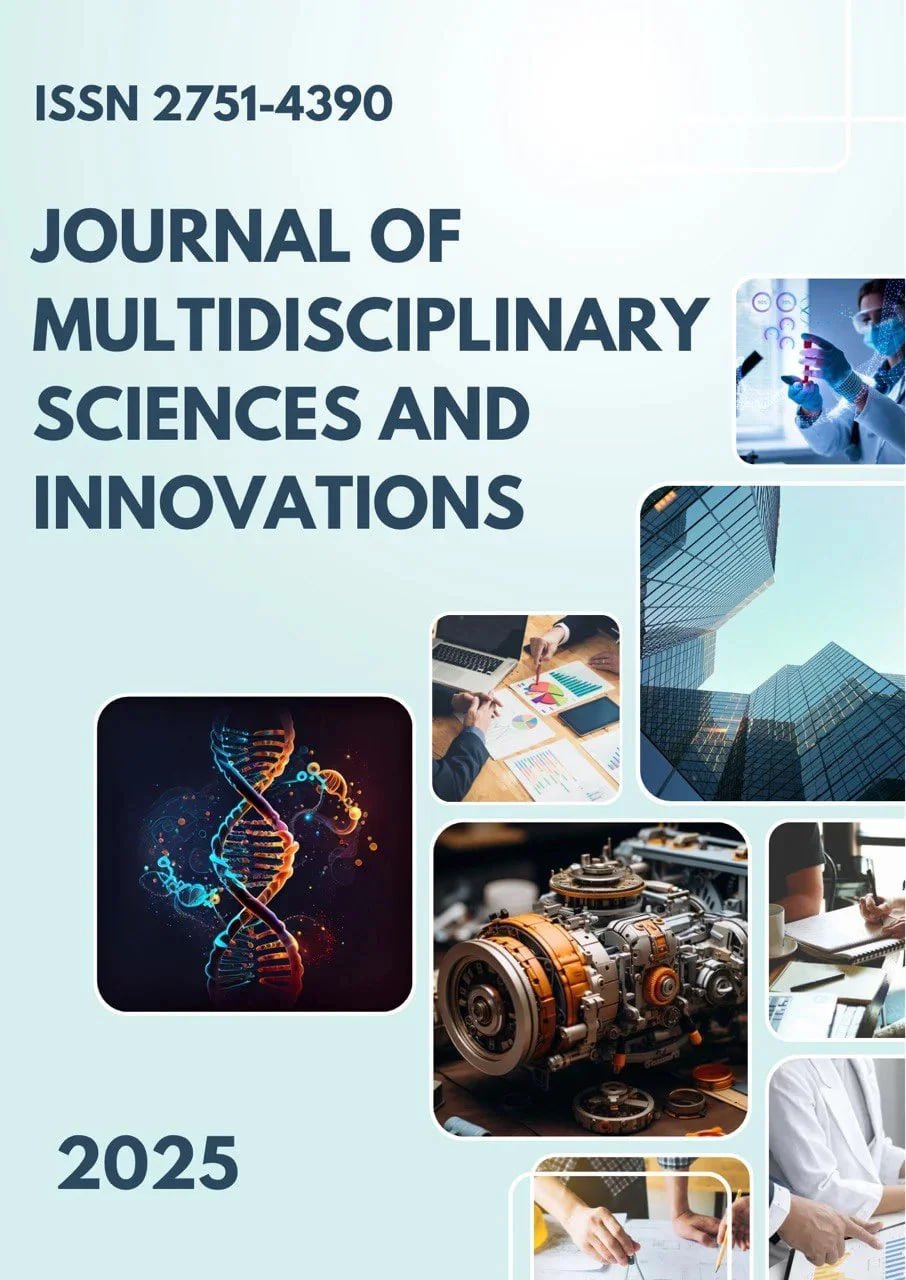INNOVATIVE TECHNOLOGIES IN THE RESTORATION OF DEGRADED LANDS
Main Article Content
Abstract
Land degradation is a critical global issue affecting food security, biodiversity, and ecosystem stability. This article explores innovative technologies used in the restoration of degraded lands, including bioengineering methods, precision agriculture, remote sensing, and soil rehabilitation techniques. The integration of digital tools with sustainable land management practices enables more efficient monitoring, planning, and recovery of ecosystems. Special attention is given to case studies demonstrating successful restoration projects through the use of eco-friendly and cost-effective technologies.
Downloads
Article Details
Section

This work is licensed under a Creative Commons Attribution 4.0 International License.
Authors retain the copyright of their manuscripts, and all Open Access articles are disseminated under the terms of the Creative Commons Attribution License 4.0 (CC-BY), which licenses unrestricted use, distribution, and reproduction in any medium, provided that the original work is appropriately cited. The use of general descriptive names, trade names, trademarks, and so forth in this publication, even if not specifically identified, does not imply that these names are not protected by the relevant laws and regulations.
How to Cite
References
1.Bai, Z. G., Dent, D. L., Olsson, L., & Schaepman, M. E. (2008). Proxy global assessment of land degradation. Soil Use and Management, 24(3), 223–234. https://doi.org/10.1111/j.1475-2743.2008.00169.x
2.Chazdon, R. L. (2014). Second growth: The promise of tropical forest regeneration in an age of deforestation. University of Chicago Press.
3.Gebbers, R., & Adamchuk, V. I. (2010). Precision agriculture and food security. Science, 327(5967), 828–831. https://doi.org/10.1126/science.1183899
4.Holl, K. D., & Aide, T. M. (2011). When and where to actively restore ecosystems? Forest Ecology and Management, 261(10), 1558–1563. https://doi.org/10.1016/j.foreco.2010.07.004
5. Lal, R. (2015). Restoring soil quality to mitigate soil degradation. Sustainability, 7(5), 5875–5895. https://doi.org/10.3390/su7055875
6.Lehmann, J., & Joseph, S. (Eds.). (2015). Biochar for environmental management: Science, technology and implementation (2nd ed.). Routledge.
7.Reed, M. S., et al. (2017). A theory of change for developing and assessing collective action for sustainable land management. Conservation and Society, 15(4), 377–391. https://doi.org/10.4103/cs.cs_16_29
8.UNCCD. (2022). Global Land Outlook 2: Land restoration for recovery and resilience. United Nations Convention to Combat Desertification. Retrieved from: https://www.unccd.int/resources/global-land-outlook/glo2
9.Zomer, R. J., Trabucco, A., Bossio, D. A., van Straaten, O., & Verchot, L. V. (2016). Carbon, land and water: A global analysis of the hydrologic dimensions of climate change mitigation through afforestation/reforestation. International Water Management Institute (IWMI Research Report 159). https://doi.org/10.5337/2016.213

